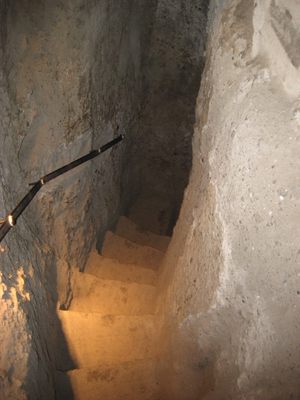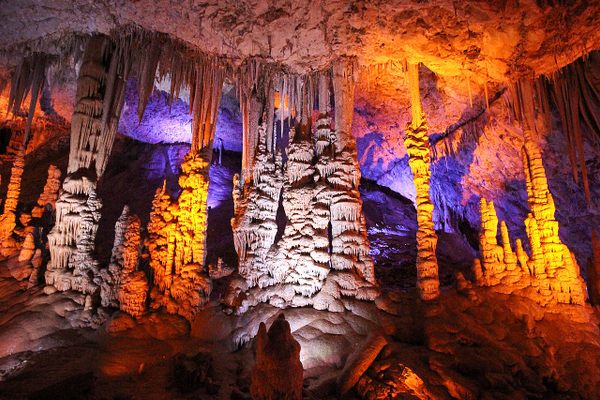About
Building a city on top of a bluff has its advantages: it looks nice, and it provides formidable natural defenses. On the other hand, it doesn’t leave you a lot of space to work with, and it limits access to non-rock resources. The people of Orvieto decided to mitigate these drawbacks by simply building a whole underground city to complement their normal, aboveground one.
Orvieto is a beautiful medieval city that sits on the flat summit of a volcanic bluff, a location that was inhabited in ancient times by the Etruscans. That Etruscan settlement — which has traditionally been thought to be the city of Velzna, although that has come into question in recent years — was perfectly situated to withstand sieges, but for one small detail: their water source was located outside of the city, on the plains below the bluff. So they sunk wells down into their impregnable perch and built chambers with cisterns to collect and channel rainwater, thus starting the subterranean construction projects that would continue for the next 2,500 years.
The wells helped the Etruscans withstand a Roman siege for two years, but ultimately Velzna (or whatever the city was called) fell in 264 BCE. However, the subsequent inhabitants kept right on digging, and as the city of Orvieto rose to prominence at the outset of the Middle Ages, the labyrinth below the city expanded phenomenally. These additions included not only wells and cisterns, but also grottoes, galleries, shelters, quarries, and cellars (with the stone spaces offering natural temperature control), all built haphazardly in overlapping layers connected by a dizzying array of tunnels.
Some spaces housed kilns for firing pottery; one contained a large olive press operation, complete with millstones, furnaces, storage structures, and troughs for the animals doing the labor. Sections of underground walls are pocked with small, regularly-spaced cubbies called columbaria, which provided pigeons with places to roost (roast pigeon still being a popular dish in Orvieta). Noble houses were equipped with escape tunnels that would spirit their owners away beyond the city walls in case of attack.
All in all, some 1,200 structures were dug into the rock beneath Orvieto, constituting an addition to the city of considerable size. However, due to their primarily logistical and often strategic purposes, as well as the fact that they are for the most part private property, it was a side of the city that was largely unseen, or even unknown. However, a landslide in the 1970s led to a “rediscovery” of this subterranean network, attracting scholarly study and ultimately leading to a small portion being available for the public to tour since the 1990s. Although Orvieto’s underground has grown with the city over the centuries, don’t expect it to grow any more; aside from archaeological activities, any further digging beneath this city has been banned.
Related Tags
Know Before You Go
There is no self-guided tour option; you must go in a guided group of about 30 people. The tour is about one hour and takes you to two different caves, each with multiple "rooms." Tickets are purchased inside the Tourist Office, located in the piazza with the Duomo. Check tour times and available languages at the tourist office. As of June 2018, English tours seemed to depart every hour on quarter. The cave entrance is a five-minute walk from the main square.
Flavors of Italy: Roman Carbonara, Florentine Steak & Venetian Cocktails
Savor local cuisine across Rome, Florence & Venice.
Book NowCommunity Contributors
Added By
Published
April 11, 2016



















































